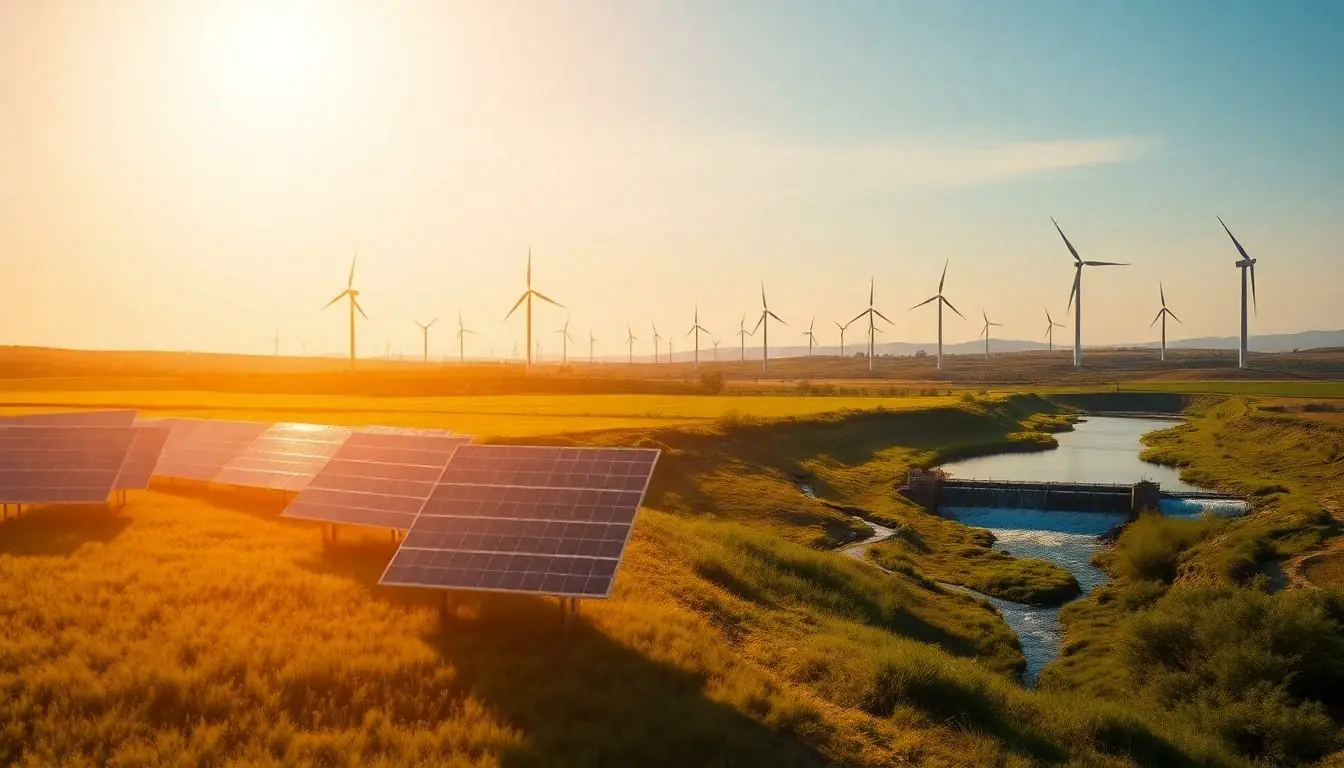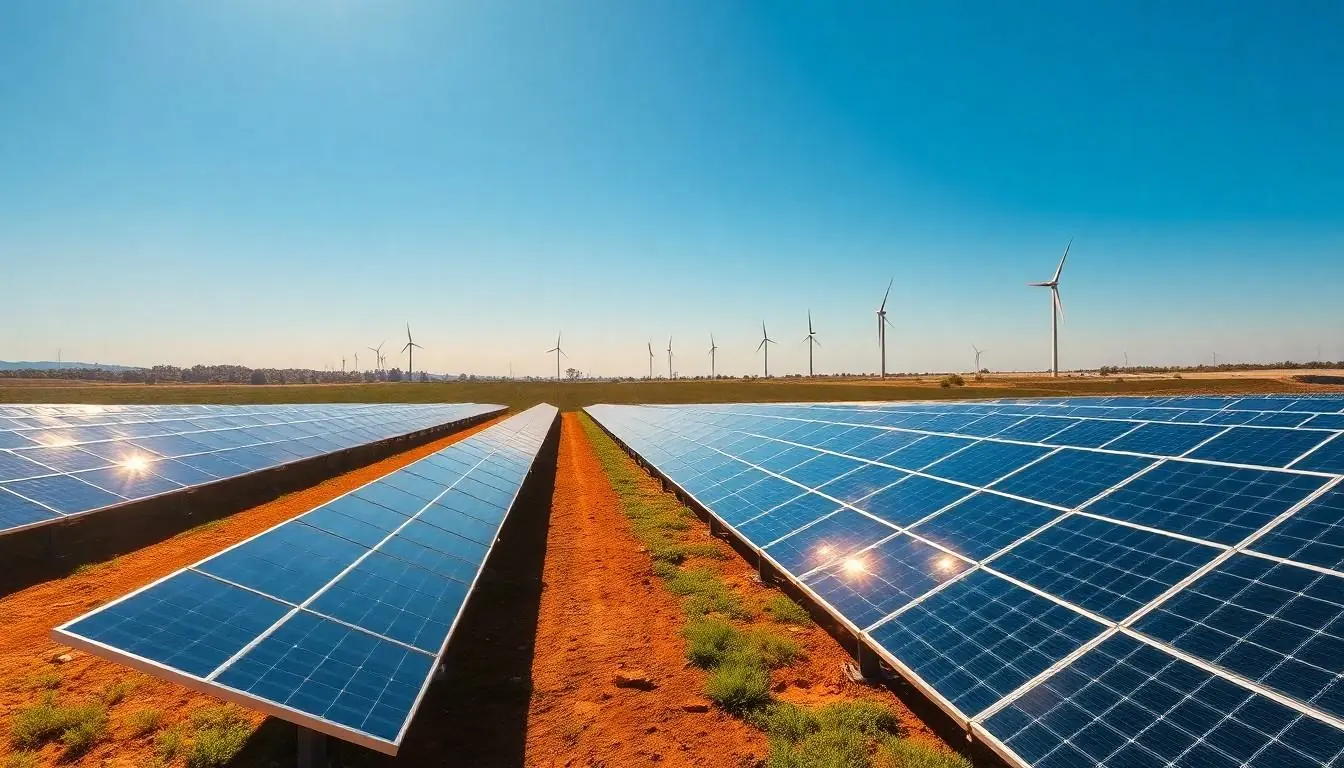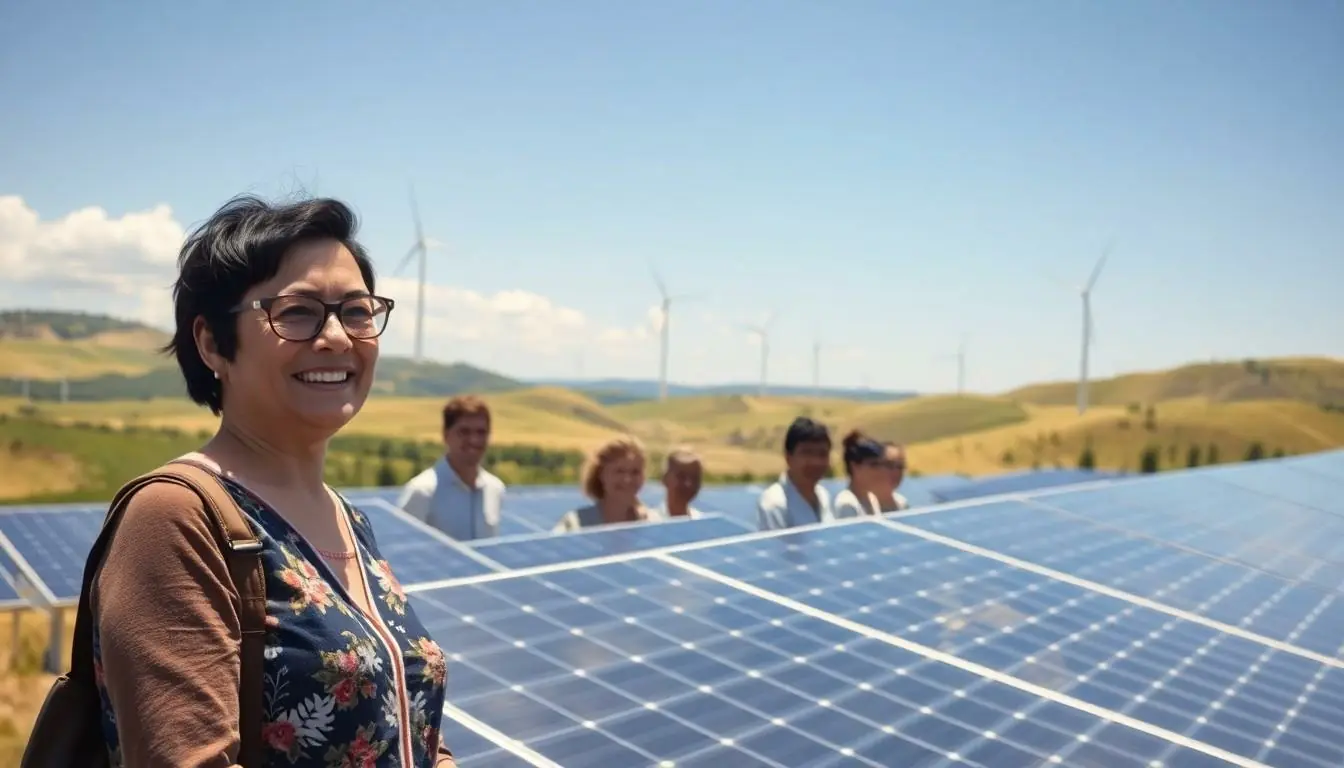When it comes to energy, the age-old debate between renewable and nonrenewable sources can feel like a showdown between a superhero and a villain. On one side, you’ve got renewable energy, the eco-friendly champion, harnessing the power of the sun, wind, and water. On the other, there’s nonrenewable energy, the fossil fuel antagonist, lurking in the shadows with its finite resources and environmental baggage.
Table of Contents
ToggleOverview of Energy Types
Renewable energy sources derive from natural processes that regenerate relatively quickly. Solar energy harnesses sunlight, wind energy captures air currents, and hydropower utilizes flowing water. Biomass represents another form of renewable energy, converting organic materials into usable fuel. These sources continuously replenish, allowing for sustainable energy production without depleting Earth’s resources.
Nonrenewable energy sources, on the other hand, rely on finite resources that cannot regenerate within a human time frame. Fossil fuels such as coal, oil, and natural gas provide the majority of the world’s energy needs today. Extraction and consumption of these resources cause environmental harm and contribute to climate change. Once utilized, these energy forms are lost for millions of years.
Comparative benefits exist between these two energy types. Renewable energy contributes to reducing carbon emissions and mitigating climate change. Advances in technology enhance the efficiency of obtaining and utilizing renewable energy. Nonrenewable energy, while currently more prevalent, poses risks to the environment and human health.
Investment in renewable energy infrastructure grows rapidly, driven by a global push for cleaner energy solutions. As societies move toward sustainability, reliance on renewable sources strengthens. Understanding the differences between these energy types supports informed decisions about the future of energy production.
Characteristics of Renewable Energy


Renewable energy encompasses various features that distinguish it from traditional energy sources. Its defining traits reflect its sustainability and potential for positive environmental contributions.
Types of Renewable Energy Sources
Solar energy harnesses sunlight using photovoltaic cells or solar thermal systems. Wind energy generates electricity through turbines driven by wind currents. Hydropower utilizes flowing water to produce energy, with dams or run-of-the-river systems playing pivotal roles. Biomass energy derives from organic materials like plant matter and waste products. Geothermal energy exploits heat from beneath the Earth’s surface. Each source contributes uniquely to creating a diversified energy portfolio.
Environmental Impact
Renewable energy significantly lessens carbon emissions, aiding in the fight against climate change. Solar and wind energy produce power without greenhouse gas emissions during operation. Hydropower, while potentially causing ecosystem disturbances, generally emits low levels of pollutants. Biomass energy involves carbon neutrality since the carbon dioxide released during combustion matches what the plants absorbed while growing. Geothermal energy contributes minimal emissions, promoting cleaner air and healthier ecosystems. Overall, these energy sources enhance sustainability and foster improved environmental health.
Characteristics of Nonrenewable Energy
Nonrenewable energy sources are finite and deplete over time. Their characteristics shape their use and impact on the environment.
Types of Nonrenewable Energy Sources
Coal, oil, and natural gas represent primary types of nonrenewable energy sources. Each type has unique extraction processes and applications. Coal often serves as a key energy source for electricity generation. Oil is widely used for transportation and heating. Natural gas provides a cleaner option for energy production with lower emissions compared to coal. These resources cannot replenish within a human time frame, creating a risk of scarcity.
Environmental Consequences
Nonrenewable energy sources significantly contribute to environmental degradation. Extraction processes can lead to habitat destruction and air pollution. Burning fossil fuels releases greenhouse gases, driving climate change. Consequently, nonrenewable energy sources harm ecosystems and public health. Communities near extraction sites often experience increased respiratory issues and soil contamination. Transitioning to renewable energy may mitigate these adverse effects, promoting a healthier environment.
Comparison of Renewable and Nonrenewable Energy
Renewable and nonrenewable energy differ significantly in various aspects, impacting their viability and environmental footprint.
Cost and Availability
Cost structures for renewable energy often decline over time due to technological advancements. Solar and wind energy installations frequently require substantial upfront investments, yet operational costs remain low. In contrast, nonrenewable energy sources like coal, oil, and natural gas often experience price volatility due to market demand and geopolitical factors. Availability varies as well; renewable sources harness abundant natural elements, ensuring consistent access. Nonrenewable sources rely on finite resources that deplete, risking future energy security.
Efficiency and Longevity
Efficiency levels between renewable and nonrenewable energy differ greatly. Solar panels typically convert around 15-20% of sunlight into electricity, while wind turbines achieve efficiencies of 35-45%. Nonrenewable energy sources, like natural gas, offer high efficiency rates but face depletion over time. Longevity also has stark contrasts; renewable energy systems possess lifespans exceeding 20 years, supporting sustainable energy production. Nonrenewable energy options, however, provide limited timeframes as resources dwindle, necessitating ongoing extraction and impacting environmental health.
The distinction between renewable and nonrenewable energy sources is crucial for understanding the future of energy production. Renewable energy stands as a sustainable alternative that benefits both the environment and public health. It offers a path toward energy independence and security while reducing harmful emissions.
On the other hand, nonrenewable energy sources face inevitable depletion and environmental degradation. As society moves forward, embracing renewable energy not only addresses immediate energy needs but also ensures a cleaner and more sustainable planet for future generations. The shift toward renewables is not just beneficial; it’s essential for a sustainable future.




